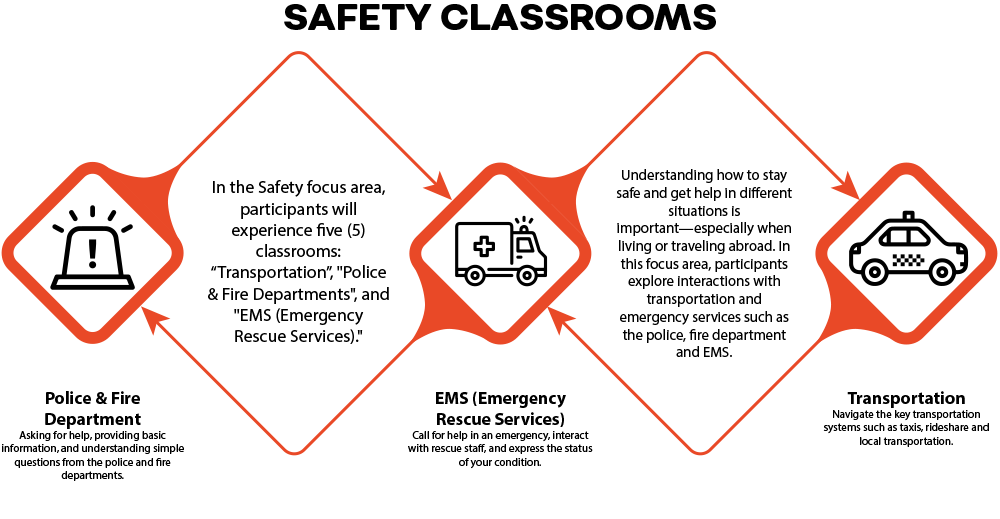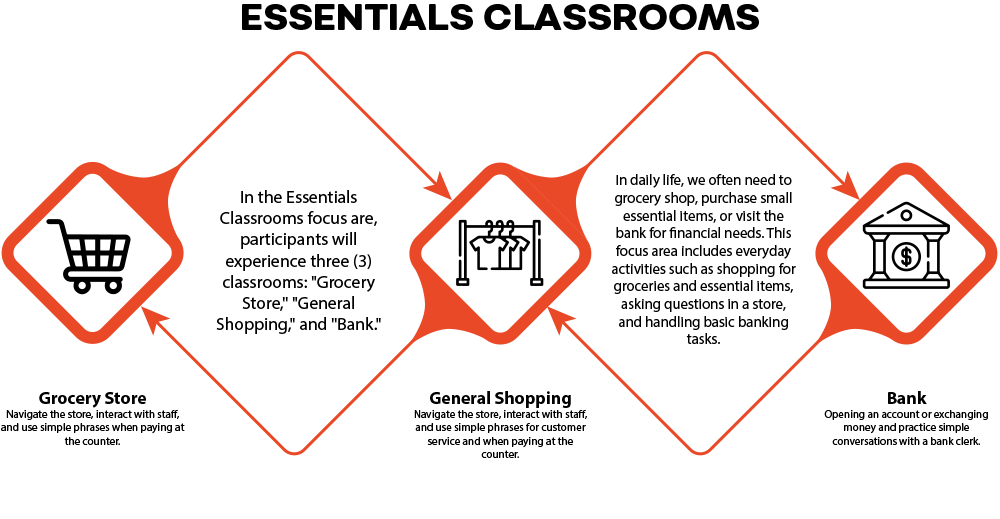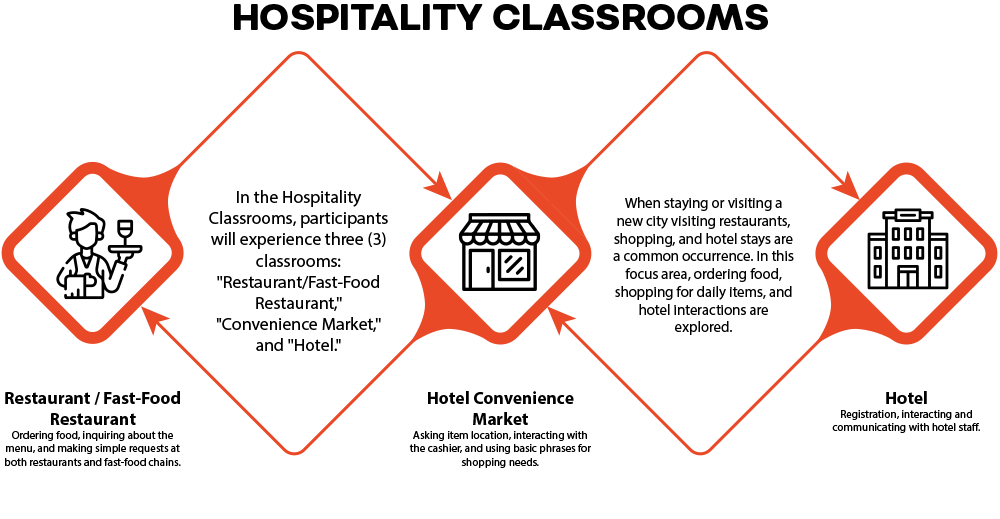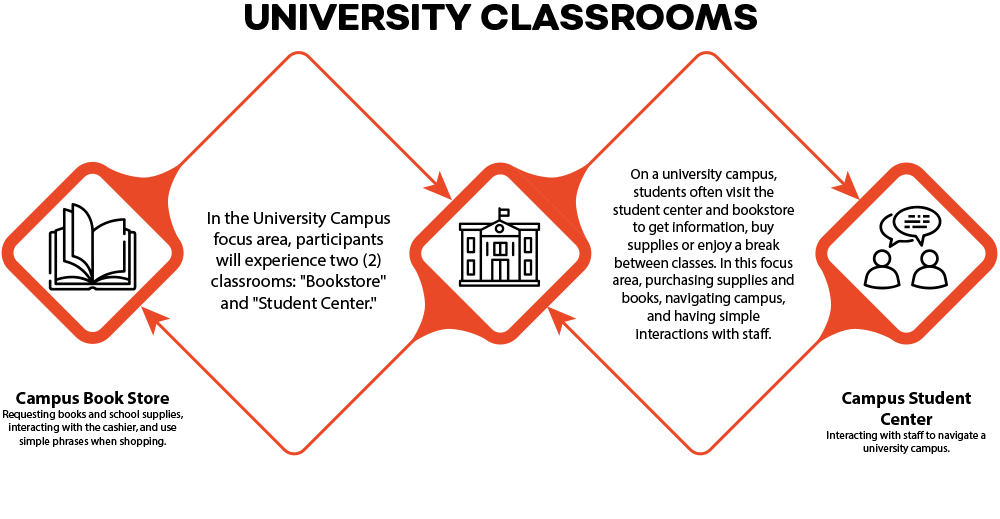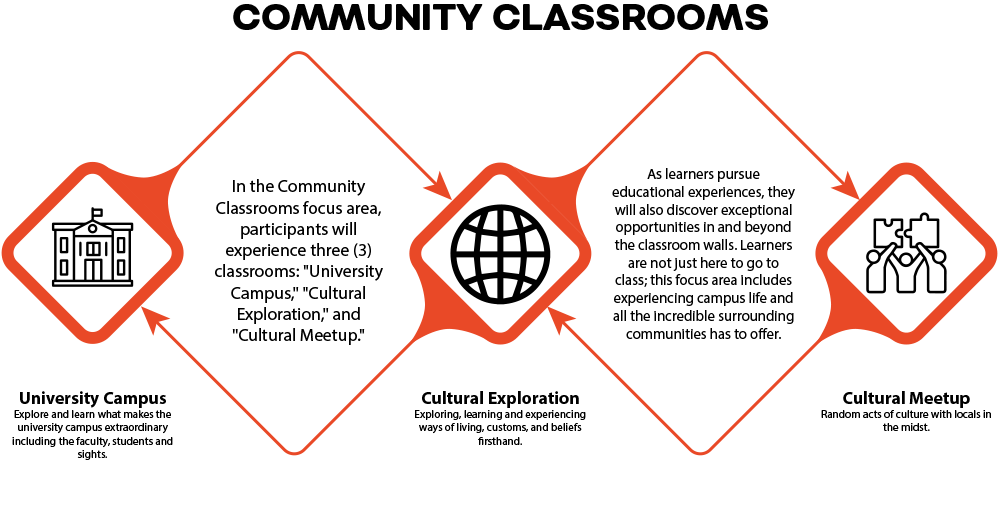CLASSROOMS
At Discovery City we believe our first responsibility is to our participants and their well- being and overall success.
In meeting their needs, we developed Real-World Classrooms to provide the safest, highest quality and most beneficial experiences imaginable. Fostering an authentic learning environment in our Real-World Classrooms are an essential component of our experiential learning experience. We aim to promote learning through direct involvement rather than passively providing information.


Utilizing experiential education methodologies, Real-World Classrooms incorporate of a variety of daily activity simulations and real-world scenarios.
Real-World Classrooms provide a bridge between theoretical knowledge and practical application,
making learning more relevant to everyday life and/or work. The experiences are designed to form
the basis for future experiences and learning.
"We have to give learners room to grow, fail and develop their capacity to feel safe and comfortable navigating and working on the world's global stage."
Chika Takai, Executive Director
Real-World Classrooms create opportunities for program participants to experience global communities first-hand in a group setting and help establish their own identity as global citizens. This group approach facilitates instructor - student - peer connections that help advance the learning process.
Real-World Classroom Descriptions
Using real-world examples and acting out real-world daily activities can make learning more meaningful and easier to comprehend.
Discovery City redefines the traditional classroom and it starts with creating experiences that simulate real life
scenarios. A well-constructed realistic scenario will fuel a learner's motivation. The Real-World Classroom creates
realistic settings, characters and a relevant storyline that is designed to keep learners engaged. Classrooms are
designed as realistic storefronts to be able to create immersive scenarios that incorporate narratives, videos or even
digital simulations to create a more realistic experience.
Set in situations that are familiar to learners, and acknowledging the nuance involved in their choices, makes the
learning easier to transfer to the real world. By simulating real-world challenges, learners gain a better
understanding of how concepts apply in practical situations.


